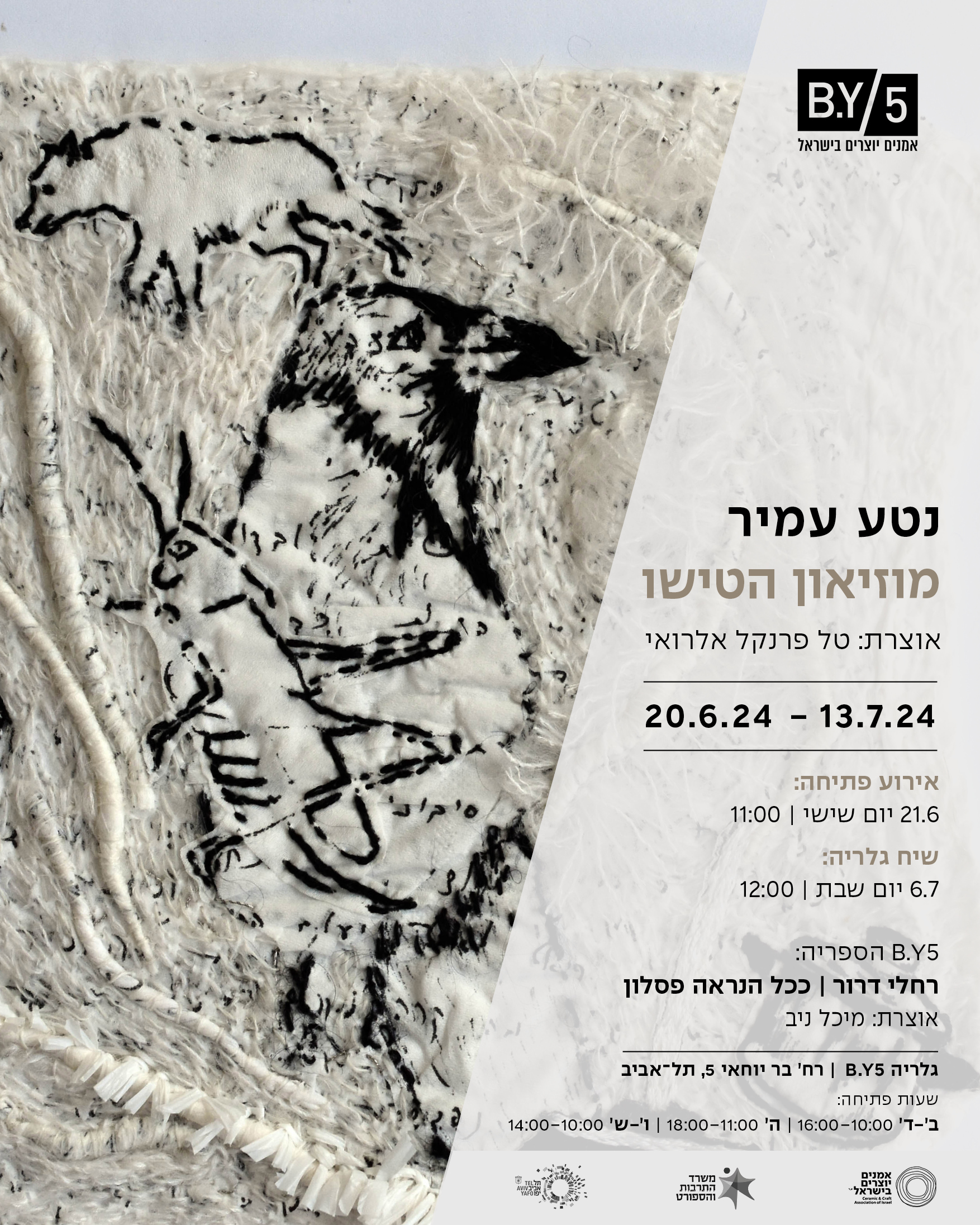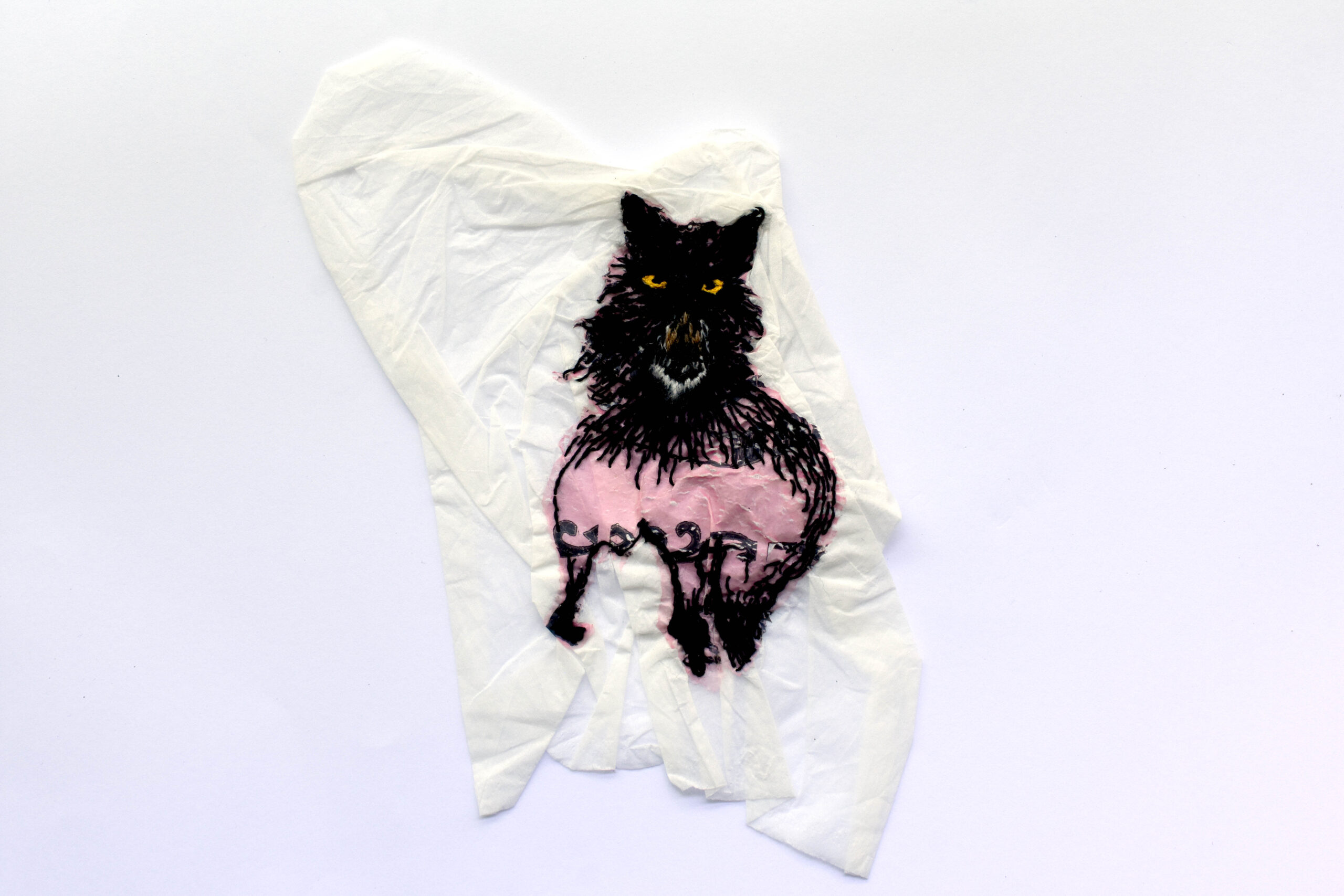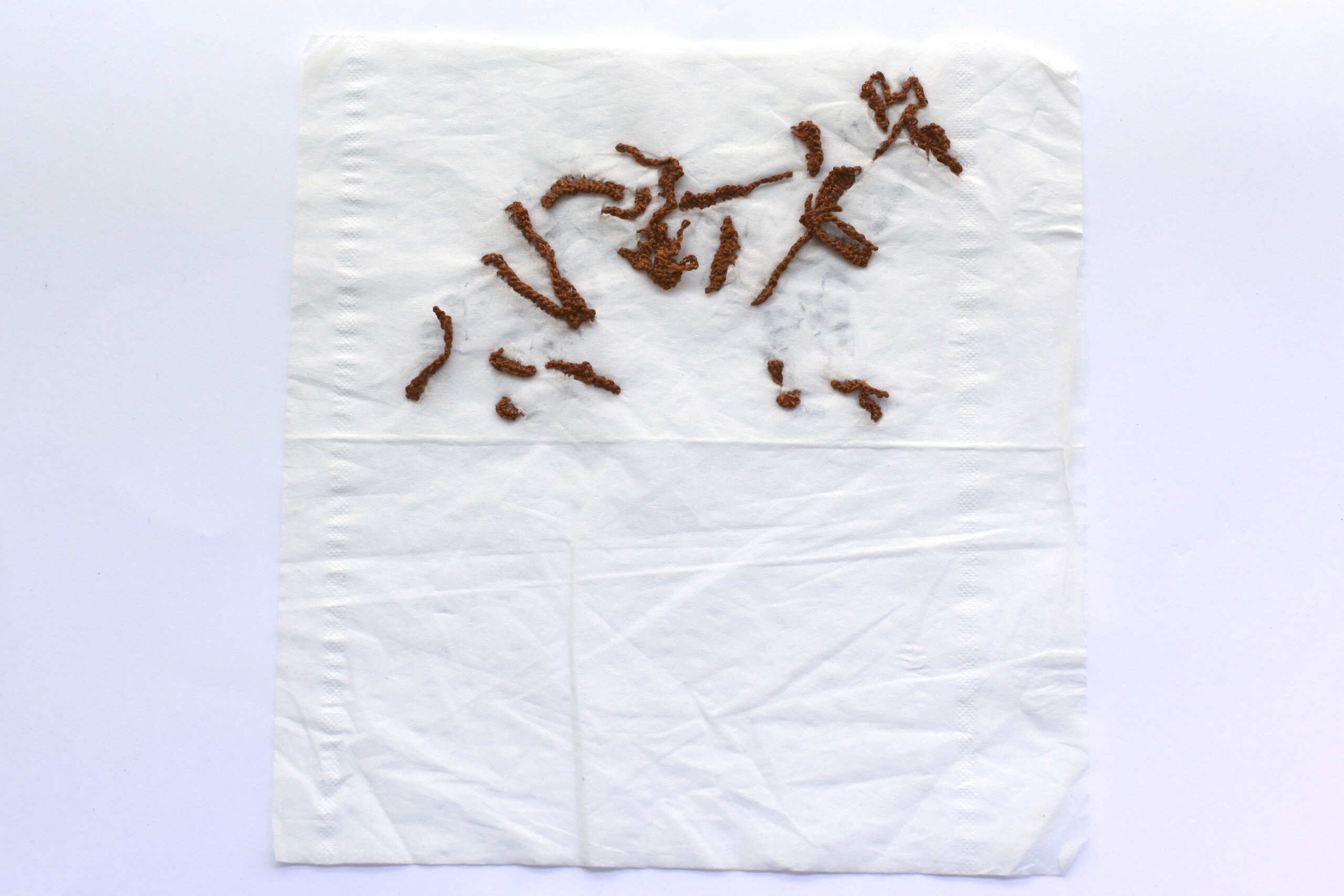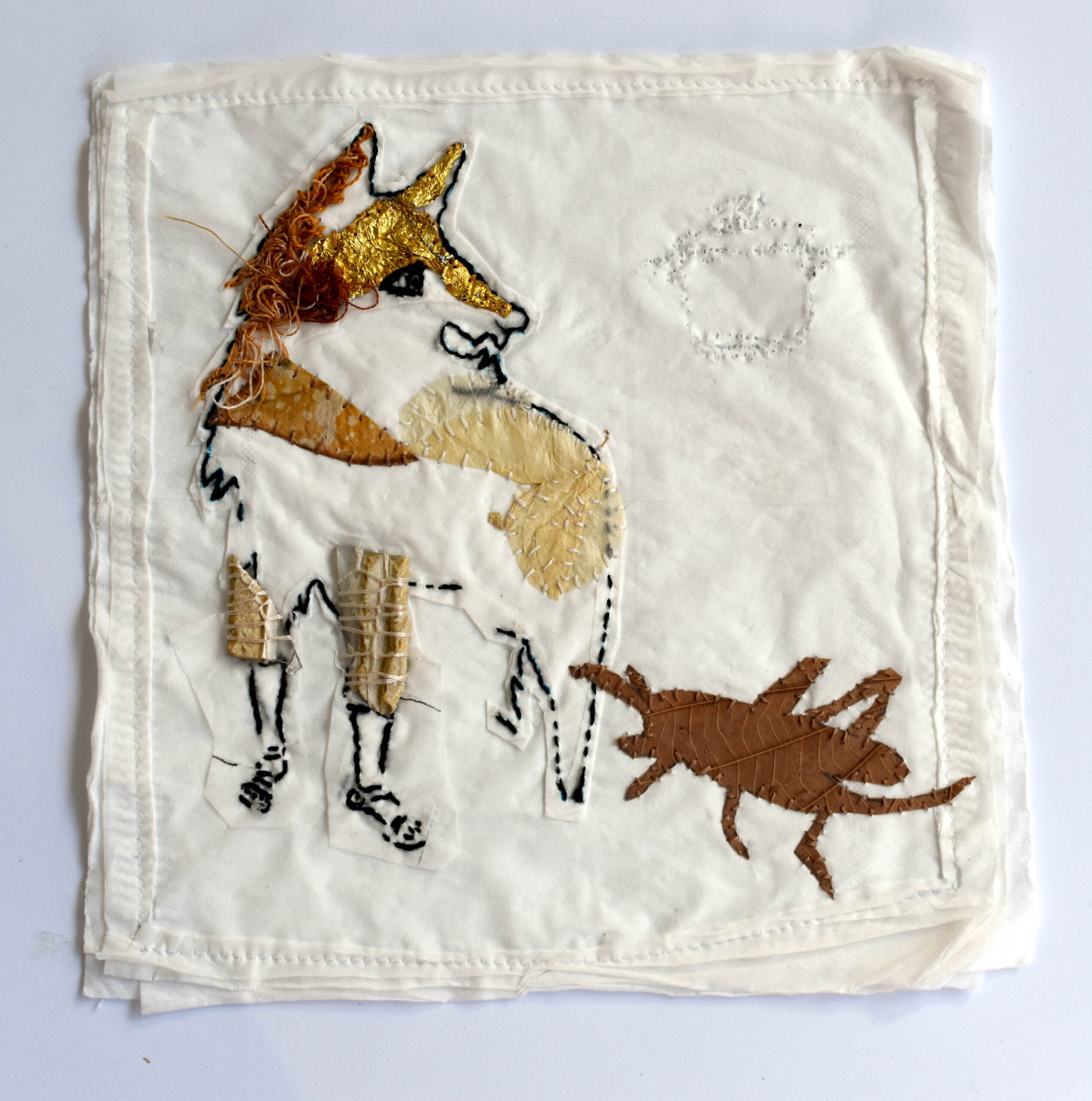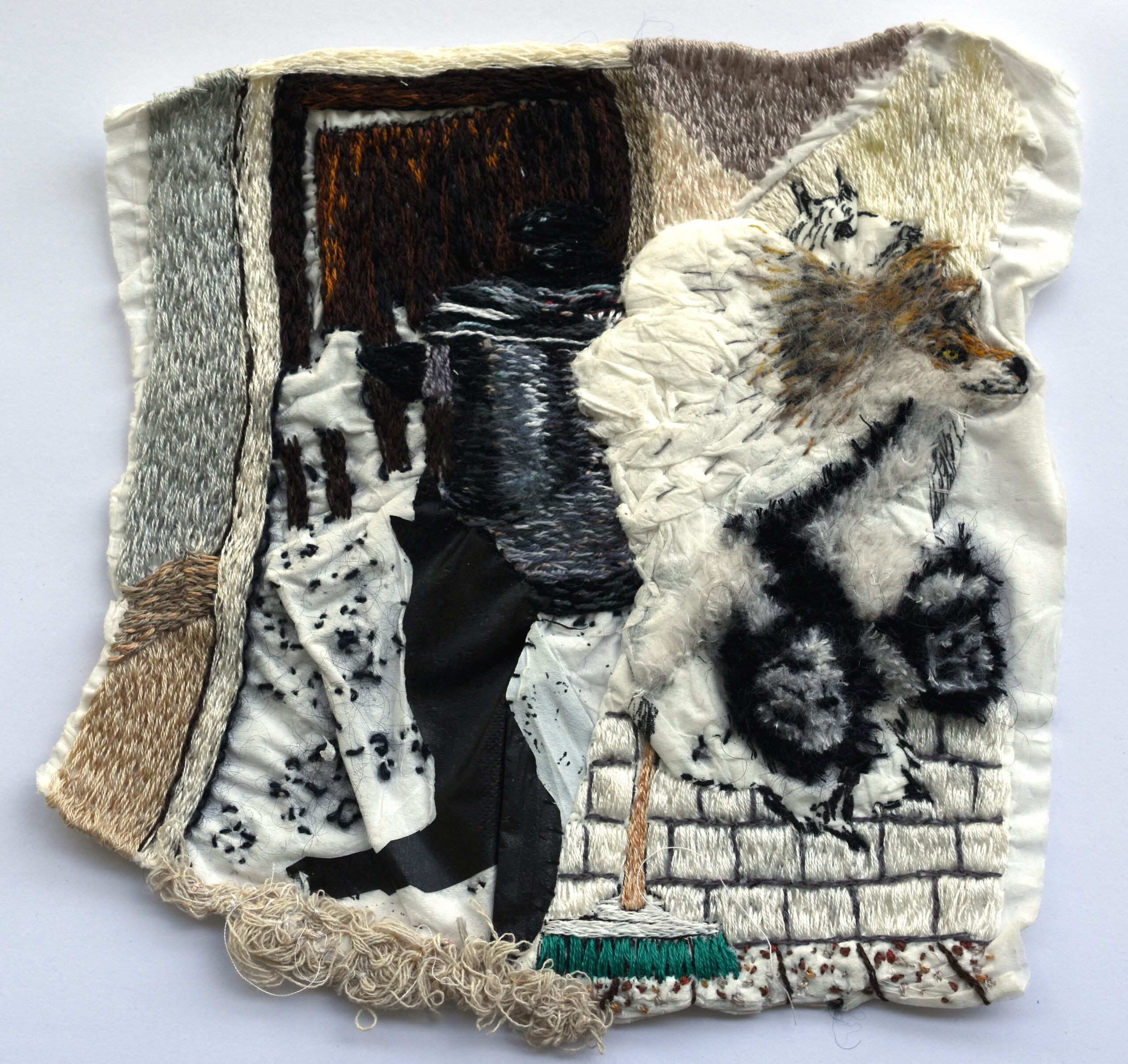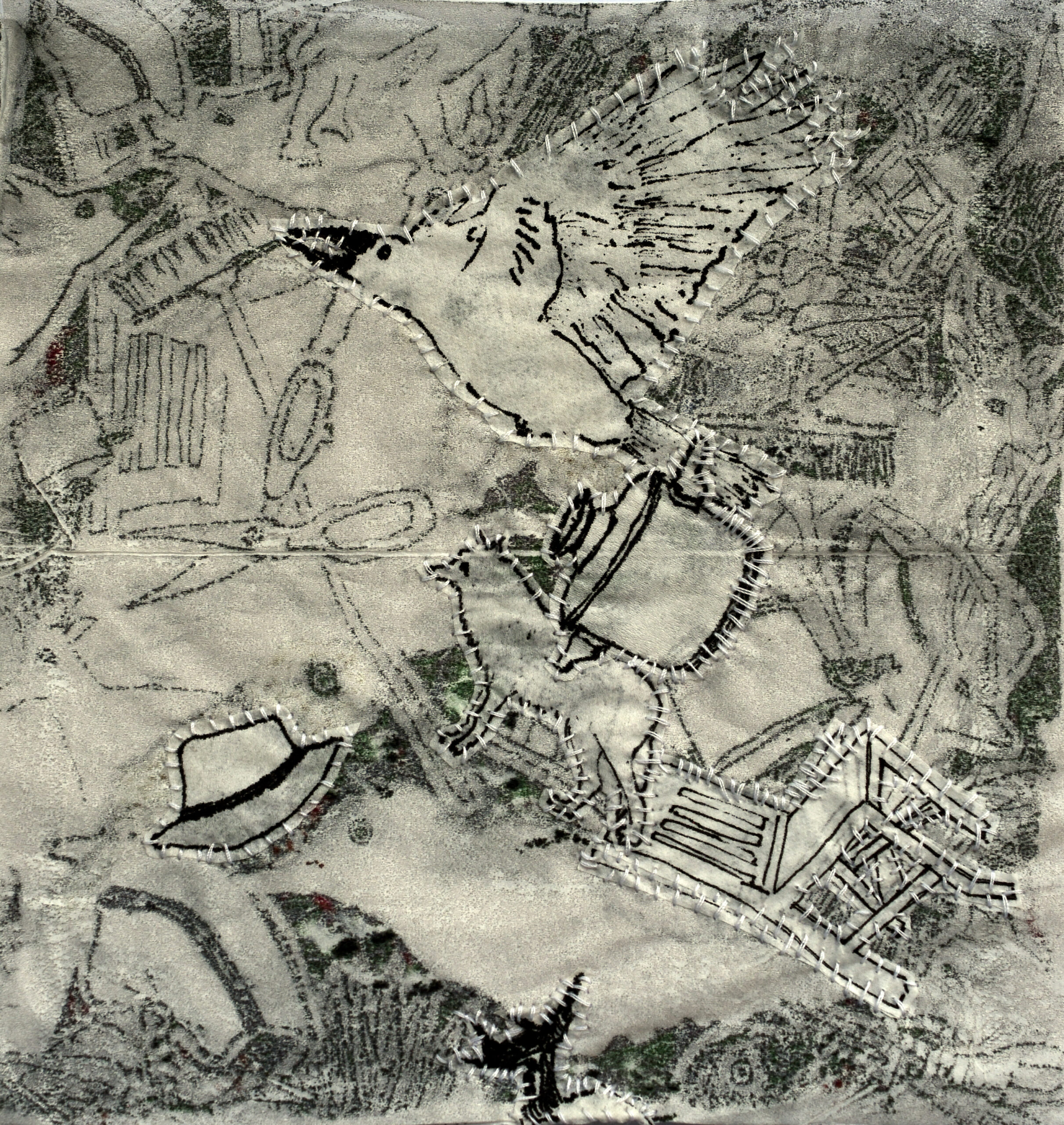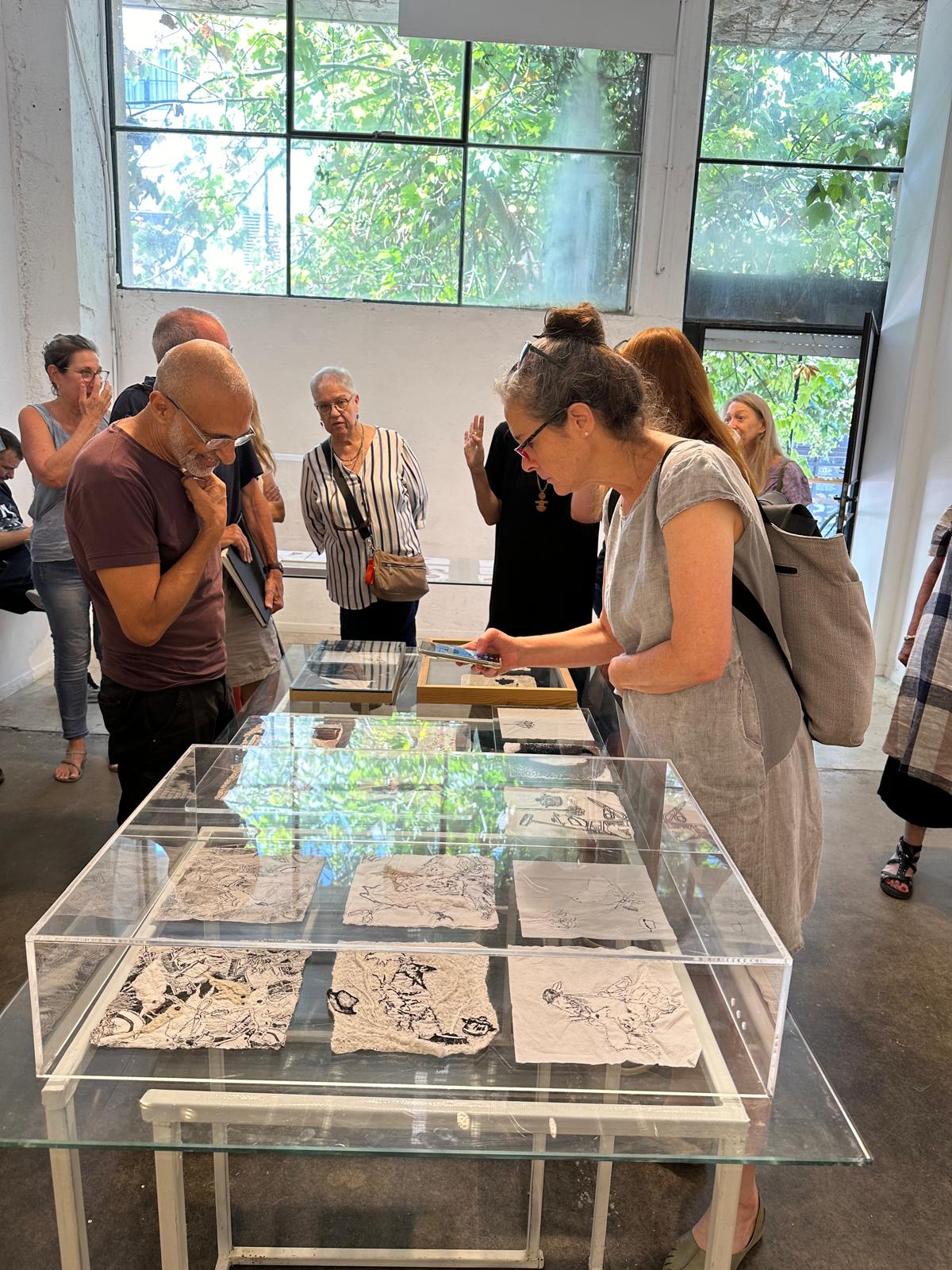Neta Amir
Tissue Museum
CuratorDr. Tal Frenkel Alroy
Tissue Museum
Neta Amir
Curator: Dr. Tal Frenkel Alroy
“At the Berlin Zoo, by the elephant seals pool, there is a unique display. In a glass box, all the objects found in the stomach of Roland the elephant seal are displayed.” (Dubravka Ugrešić, The Museum of Unconditional Surrender)
On the glass tables there are sheets of tissue, a foreign word that has no plural form in Hebrew. Serving as museum artifacts, they carry extra weight. As we look at them through the transparent cases, we ask them to tell us a story. What kind of a story can we hear from exhibits made of tissues? What kind of documentation, evidence or archaeological discovery can they offer us?
Neta Amir, a textile artist, has been creating a world on tissue for about two years. The incidental material fascinates her with its surprising contradictions. In the cultural hierarchy it belongs at the marginal edges, but it turns out to be a strong substance that survives diverse actions and manipulations. We are familiar with its casual uses as a means of wiping the nose or cleaning eyeglasses, but its ability to hold, preserve, copy, is astonishing. “Tissue” in Hebrew it is a paper handkerchief made of cellulose pulp, but in English it refers to a living cell tissue. The act of stitching on tissue carries multiple connotations.
Under the magnifying glass of the concept of ‘museum’, tissue becomes a scale. It serves as a permanent material medium and provides a measured and solid framework. But it is also a deceptive living tissue. Compared with the conventional museum document, the archive page or coherent evidence, a tissue is not reliable evidence. It is not organized or linear. On the contrary. Neta produces the strange display out of a passion to interrupt any story and break any convention. A tissue is a space of disorder, an internal mixer of images and materials and invented techniques. It contains objects and animals, threads and pieces of glass, plastic bags and leaves, iron heat and needle pricks, water and ink. Like the stomach of Roland the elephant .seal, tissue is an absorptive cavity
The tissue museum is a space where all things are equal, whether they float below or above the transparent display case. It offers liberty and imagination and freedom of movement. But, as in Bakhtin’s carnival, disorder entails destruction. Roland died from swallowing all the objects that fell into the pool at the zoo. In what world can tissue serve as support?
